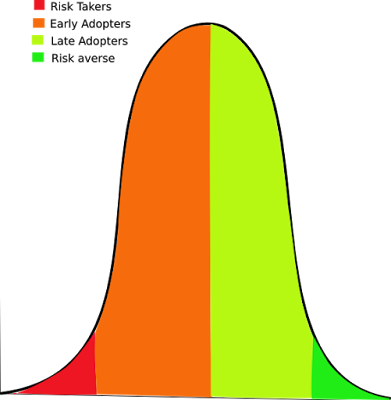Introduction
I wanted a remote webcam for watching the robin that lives around my apple tree. Trailcams are a bit pricey and I had an old android phone with a half decent camera laying around doing nothing.The Phone...
...s a very battered Blu Vivi 6. The screen is broken, the USB C port is loose and the battery lasts about 30 minutes because it has been frozen a few times..The USB C port is fixed by gluing in a magnetic connector which also seals the port somewhat against the weather.
I've installed IP Webcam on it from the play store. You can find it here https://play.google.com/store/apps/details?id=com.pas.webcam
I've gone for the Pro version but everything here works with the free one. The only limitations are Tasker integration and the ability to customise the UI. We are not going to use either of those here. I upgraded because I think the developer deserved a coffee (or Russian tea) on me.
Installing it is straightforward and I've also put it on a couple of old HTC mobiles that are being security cams.
To do everything in this article you are going to need a bit of memory. The Blu has 64GB and I'm using about half of it. That's about 1200 jpgs and several hours of mp4s.
I'll talk about how to get the images off to a pc and get the memory back later.
You'll also need a wifi signal where your camera is sited. You can use broadband and access your through the lvideon cloud see here https://www.ivideon.com/
I haven;t got a sim in the Blu so that's not an option.
I use this https://www.amazon.co.uk/NETGEAR-Wi-Fi-Range-Extender-EX2700/dp/B00NIUHAG6/ref=sr_1_5 network extender to get to the shed so I have coverage over all of my garden. Cheaper wifi extenders are available but this one works for me.
IP Webcam Setup
When you start IP Webcam it shows the setup screen. For plain vanilla you can just jump to the last item and it will work.Before you set up anything you have to give IP Webcam some permissions to photos and sound.
For a start set up the Video Preferences I use the highest resolution possible and lock the camera in Landscape mode.
The other important settings are the motion and sound detection. I have motion detection on and sound detection off. I was getting a lot of false positives from the wind blowing across the camera. Getting the optimum sensitivity will take trial and error and you can play around with this in the web interface.
Starting the Webcam Server
IP Webcam comes with its own webserver so you can connect to it with a browser. When you start the server it tells you the web address that you need to type in to your browser.The first thing you should do is configure your router to make this a address permanent. I have a BT Home Hub and the important bit of the settings screen looks like this:
If you find this doesn't work and the assigned ip address changes it could be that your phone is registered on the network more than once. Have a look for duplicate names or MAC addresses in your connected devices and remove the ones you are not using.
Power Management
Even with the all the power management options available the application is power hungry, especially if you opt for aggressive focusing which keeps the camera focused constantly so you can take a still image instantly. Note that if you want to record stills automatically you are going to need the IP Webcam add in. I'll blog about that later. If I'm out of reach of mains power, I use an external battery pack. A big RAV 280000mah battery pack like this https://www.amazon.co.uk/RAVPower-Portable-Charger-26800mAh-External-Black/dp/B012V9H3WA/ in a margarine tub with a hole for the power cable.
Weatherproofing
The Blu comes with a silicone case which is sealed except for the camera, headset and power sockets sealed. I've covered the headphone socket with tape. I wouldn't trust it in a raging storm but it has managed the odd shower without coming to any harm. I'm considering sealing it in a food box with only a hole for the camera lens which I can seal with elefant snot (that really is what Blue Tack is called in Danish)
All that is left is to site your camera in an appropriate place and wait for the motion sensors to pick stuff up. The video will record in a local file which you can watch on your phone. Until you get the motion sensitivity fine tuned, expect a lot of false positives. Especially if there is foliage in your camera field. You'll get a video every time the wind blows.
Uploading to cloud storage
I use google photos to backup and manage the pictures. You can do this through the IP Webcam web interface but the google photos interface is a bit nicer and when they are on the cloud you can safely delete them from the phone.
First make sure you have recorded at least one video.
Setting up photos is pretty straightforward.go to Settings -> Backup and Sync --> Backup device folders and you should see a folder called 'modet.' Add that to the folders backed up and that's it. There's a bit of a lag between recording and the videos appearing in in Photos so be patient.
Expect to be clearing out the false positives frequently. The free allowance for original size photos is 50GB. You'll go through that quite quickly. The great thing is that deleting from Photos also deletes on your device so it keeps it cleaned up reasonably cleaned up.
There is a Dropbox plug in for IP Webcam but I seem to have broken it. I've emailed the developer to see what I've done wrong.
Coming Soon
Next article "Setting up IP Webcam to take still images" coming soon.




